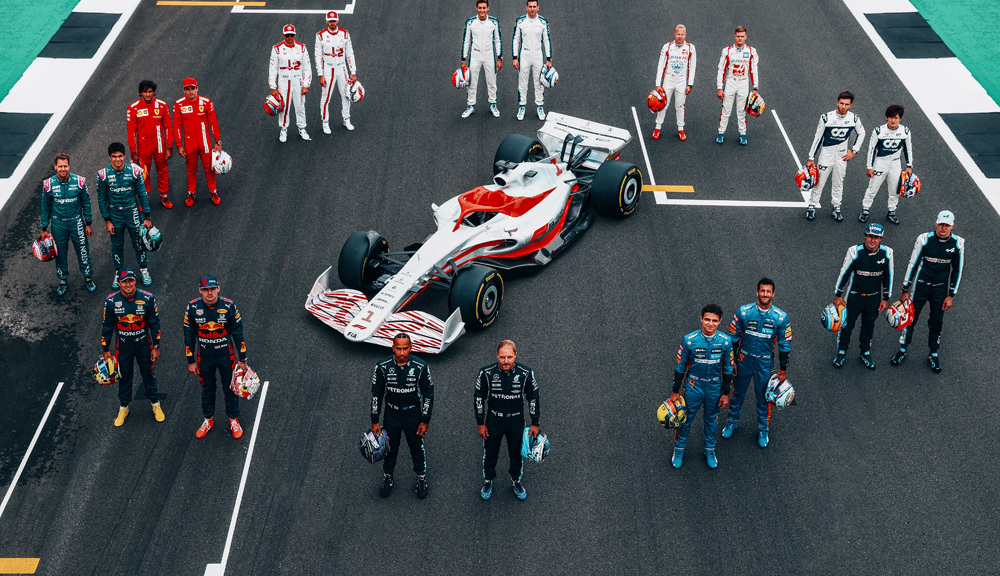With the current season leading up to an exciting tussle between Max Verstappen and Lewis Hamilton, the new F1 car for 2022 has been unveiled.
Formula 1 has finally announced the rules and regulations for 2021’s big shakeup. The regulations were originally intended for this season before being postponed thanks to the impact of the COVID-19 pandemic.
The 2022 car is developed by Formula 1’s in-house Motorsports team in collaboration with the FIA and has put a lot more significance on the aerodynamic property known as ‘ground effect’. It basically means that overtaking will now be easier, which means more action on the track and will make the viewers hooked up to their screen.

F1 is introducing new aerodynamic regulations for 2022 with the aim of reducing the “dirty air” produced by the current cars, which makes passing difficult.
According to F1 experts the current cars lose 35 percent of their downforce when they are around three car lengths behind another car, with the loss increasing to 47 percent when they are about one car length behind. The new rules promise to lessen those downforce losses to 4 percent and 18 percent. A redesigned front wing is simpler than before and has wing flaps that now stretch all the way to the nose. This is said to allow for sleeker bodywork, create less dirty air, and be less impacted by the dirty air when following another car.

Pirelli tyers has helped Formula 1 teams, including well-known manufacturers such as Alfa Romeo, Ferrari and Maserati, win championships and races on tall, narrow tires. But the upcoming 2022 Formula 1 season will see a change, from 13in to 18in. Pirelli wheels will also get a new rubber compound which will allow better grip, less heat and less wear which will create rotational airflow and direct the air through a steeper diffuser ramp.

Coming to the engine F1 cars will continue to use 1.6-litre V6 turbo engine rules remain largely the same, but the design of the power units will be homologated at the start of the season and be frozen up to the end of at least 2025. Current regulations see cars running on fuel containing 5.75% bio-components. F1 is still working hard to introduce fully sustainable fuel in the near-future, 2022 will see the bio-component ratio rise to 10%. That will be achieved through a move to ‘E10 fuel’ – ‘E’ standing for ethanol, while ‘10’ refers to its percentage in the mixture.

One of the key new safety features for 2022 is that the chassis now need to absorb 48% and 15% more energy respectively in the front and rear impact tests, as well as greater forces in the static ‘squeeze’ tests required to homologate the chassis and certify their strength. The nose will be longer to improve the energy absorption, while the side impact structures will also be strengthened and cockpits will be made larger to help taller drivers.

The teams and FIA had agreed on a cost cap of $175 million for 2021, but that has now been reduced to $145 million. The cap will further reduce to $140 million in 2022, and then to $135 million in 2023. The reduction is due to the coronavirus pandemic that has seriously shaken up the financial stability of all teams. Not only will the new cost cap reduce the parity between the teams, it will ensure the sport is more cost effective too. The staggered approach is to allow the teams to restructure their operations to the new budget caps. Some exclusions are allowed such as the carryover of parts from 2020 to 2021 as well as the salary of the workforce on leave.
In conclusion, F1 next year is sure to get a lot more exciting, which is always great news. There are other rules and more updates to come so stay tuned. However, this week’s sprint race and main race at the Spa-Francorchamps GP is going to be no less. Make sure you tune into that.
